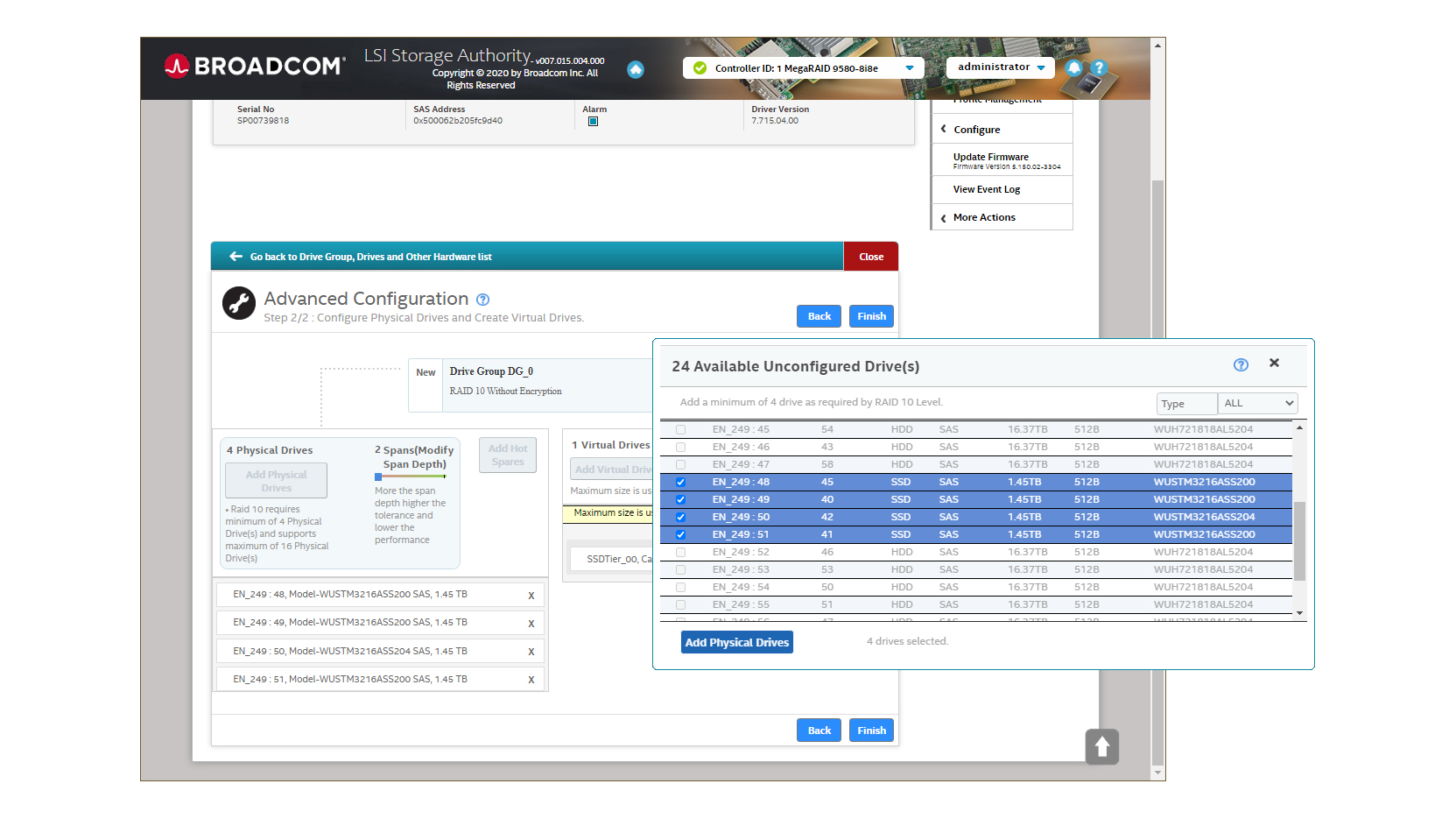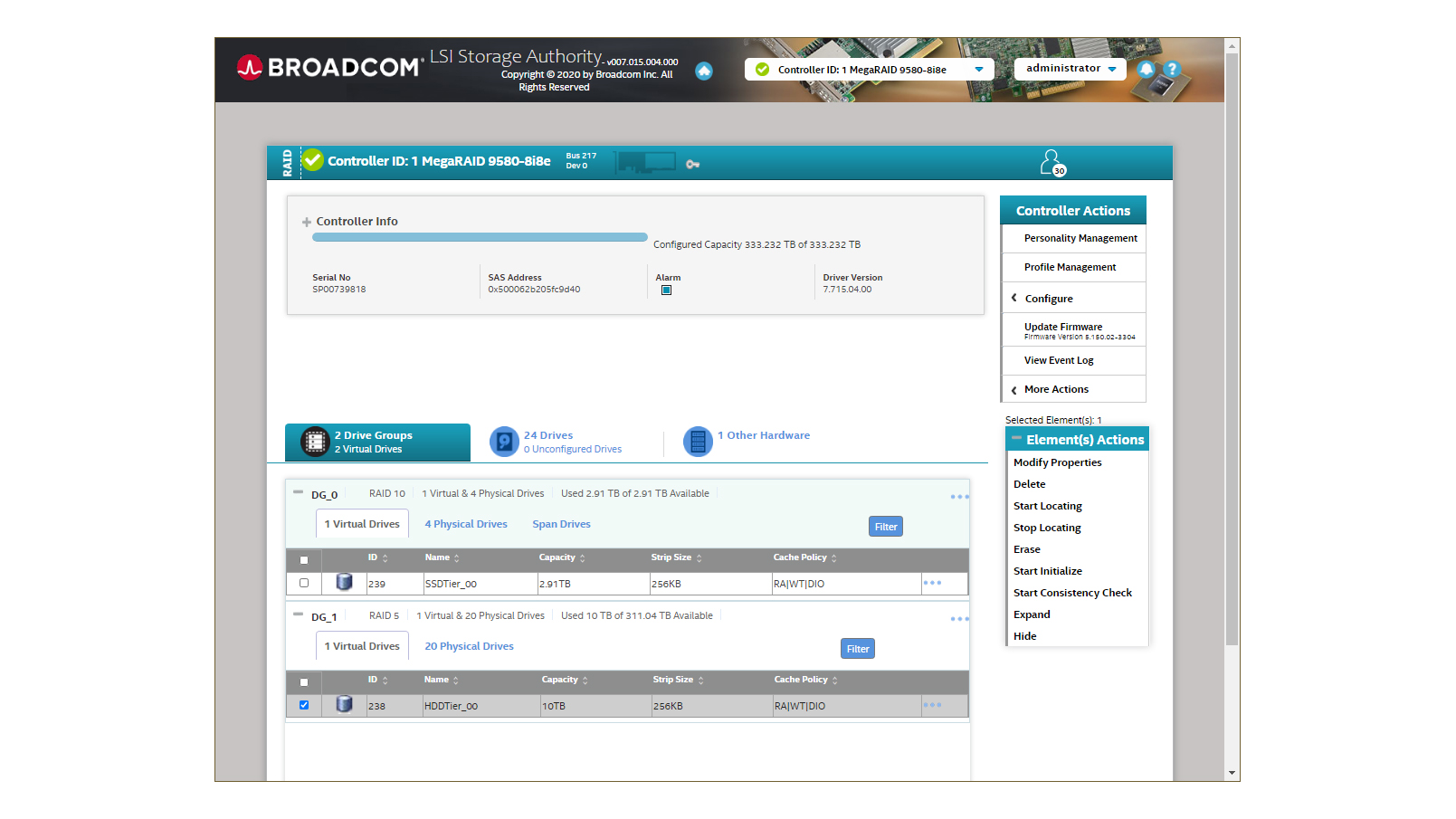Western Digital Ultrastar Data60 review: A JBOD of distinction
The Ultrastar Data60 offers a massive storage capacity at a compelling price


-
+
Superb value
-
+
High levels of redundancy
-
+
Huge storage capacity
-
+
Hybrid SSD/HDD design
-
+
Smart zoning feature
-
-
A web interface would be useful

Big data, software-defined storage (SDS) systems and data analytics are driving a ravenous demand for storage capacity and the humble JBOD (just a bunch of disks) array is proving to be a compelling solution for a number of reasons. They’re capable of delivering enormous capacities in rack-dense environments, they can scale easily with demand and are a lot more affordable than traditional RAID and SAN arrays.
The Western Digital (WD) Ultrastar Data60 exemplifies these attributes to a tee. This 4U rack system supports up to 60 storage devices and with WD’s 20TB SMR hard disks on the horizon, it will soon be able to deliver a maximum capacity of 1.2PB. Versatility is a key feature: the Data60 is a hybrid solution that allows you to mix up to 24 SSDs with HDDs to present a data acceleration tier.
Two main configurations are supported, and the lower-cost SATA model comes with a single I/O module (IOM). Performance-oriented SAS3 models take advantage of the dual-ported drives and have two IOMs running in active-active mode for high availability.
In either case, the minimum specification is a chassis partially populated with 24 SSDs or HDDs. The Data60 certainly scores for value, as the price we’ve shown includes not only dual IOMs but 24 12TB Ultrastar SAS3 HDDs, to boot.
Western Digital Ultrastar Data60 review: Storage layout and features
Internally, the Data60 is very accessible, with the sixty top-loading drive bays neatly arranged in five rows of twelve. To populate the chassis, you start at the rear and gradually move towards the front as each row is filled.

The two hot-swap IOMs are positioned in the centre of the chassis with a dedicated fan module located behind them. General cooling is handled by a bank of four large hot-plug fan modules at the rear and sitting underneath these are six mini-SAS ports per IOM for host connections.
The SAS ports play a dual role as they can be used to direct-attach hosts or for further expansion. The Data60 supports a wide range of expansion options, allowing you to daisy-chain up to four systems together using active SAS cables.
Sign up today and you will receive a free copy of our Future Focus 2025 report - the leading guidance on AI, cybersecurity and other IT challenges as per 700+ senior executives
Zoning is another smart feature; you can separate the disk bays into groups and present them to selected hosts. By default, zoning is disabled meaning all hosts can see all drives, but you can create two, three or six zones with each one automatically assigned to specific host ports. Zone configuration is a little tedious though; you’ll have to use either in-band SES (SCSI Enclosure Services) commands or access the IOM OOB (out of band) Gigabit ports and set up zones with Redfish Curl commands.
Western Digital Ultrastar Data60 review: IsoVibe and ArcticFlow
To ensure continuous reliable operations, the Data60 incorporates two technologies patented by WD. Excessive mechanical and acoustic vibration in densely populated disk arrays of any type is the enemy of reliability, but WD’s IsoVibe system is designed to counteract it.
IsoVibe protects storage devices by using precise cuts in the system baseboard that are designed to function as a suspension layer. This shields each drive from the vibrations of its neighbour and reduces their effect across the entire chassis.

The main fan mountings are designed to reduce mechanically-induced vibration and the chassis air flow layout cuts acoustic noise as well. Unlike many disk arrays that simply suck air from the front and hope it reaches all the drives, WD’s ArcticFlow divides the chassis into two separate cooling zones to take advantage of data centre hot and cold aisles.
The front three rows of bays are cooled by drawing air straight from the cold aisle and then ducting the flow to each side of the rear three bays, where it exits into the hot aisle. The rear zone receives its own share of air from the cold aisle but this is delivered to the centre of the chassis through a tunnel before being passed over the bays.
Western Digital Ultrastar Data60 review: Performance
For performance testing, we installed four 1.6TB WD Ultrastar SAS3 SSDs and 20 18TB Ultrastar SAS3 HDDs all fitted in solid carriers that slip easily into the selected bays and lock into place. Make sure the lid is perfectly positioned as it incorporates a small magnetic intrusion sensor, and if it’s even slightly disturbed, this will ramp the fans up to an incredibly noisy (86dB!) turbo mode.
There are a huge range of deployment scenarios the Data60 is suited to so for testing, we opted to keep it simple and look at a basic setup. We hooked it up over dual SAS cables to a Dell PowerEdge T640 Xeon Scalable server running Windows Server 2019 and equipped with a Broadcom MegaRAID 9580-8i8e PCI-E RAID card.
Using the LSI Storage Authority web-based configuration tool, we created a huge 313TB RAID5 array from the twenty 18TB SAS3 HDDs and presented a 10TB virtual volume to the server. With Iometer running on the new volume, we recorded impressive read and write rates of 6,732MB/sec and 6,410MB/sec while for random operations, these numbers dropped to slower but still credible speeds of 1,940MB/sec and 650MB/sec.

Swapping over to a volume on a RAID10 array built from the four SAS3 SSDs returned sequential read and write rates of 4,480MB/sec and 6,540MB/sec and random rates of 5,230MB/sec and 2,560MB/sec. The SSDs made their mark on random write I/O throughput by delivering 59,700 IOPS compared to 19,000 IOPS for the HDD array.
Western Digital Ultrastar Data60 review: Verdict
Much more than your average JBOD, the UltraStar Data60 will appeal to organizations tussling with the demands of big data as it teams up an innovative design with a truly remarkable storage density. Hybrid support for SSDs as well as HDDs allows flash acceleration tiers to be presented to hosts, the system provides end-to-end redundancy and it’s all delivered at a very competitive price.
Western Digital Ultrastar Data60 specifications (as reviewed)
| Chassis | 4U rack mount |
| Drive bays | 60 x hot-swap top load |
| Power | 2 x 1600W Platinum hot-plug |
| Cooling | 4 x enclosure fans, 1 x IOM fan |
| Drive support | SAS3 or SATA, maximum of 24 x SAS3/SATA SSDs |
| Drives included | 24 x 12TB Western Digital Ultrastar SAS3 |
| Controllers | 2 x hot-swap IOMs each with the following: |
| Ports | 6 x MiniSAS HD ports |
| Network | Gigabit |
| Management | Redfish API |
| Warranty | 5 year limited – including drives |
Dave is an IT consultant and freelance journalist specialising in hands-on reviews of computer networking products covering all market sectors from small businesses to enterprises. Founder of Binary Testing Ltd – the UK’s premier independent network testing laboratory - Dave has over 45 years of experience in the IT industry.
Dave has produced many thousands of in-depth business networking product reviews from his lab which have been reproduced globally. Writing for ITPro and its sister title, PC Pro, he covers all areas of business IT infrastructure, including servers, storage, network security, data protection, cloud, infrastructure and services.
-
 Trump's AI executive order could leave US in a 'regulatory vacuum'
Trump's AI executive order could leave US in a 'regulatory vacuum'News Citing a "patchwork of 50 different regulatory regimes" and "ideological bias", President Trump wants rules to be set at a federal level
By Emma Woollacott Published
-
 Microsoft Excel is still alive and kicking at 40 – and it's surging in popularity as 82% of finance professionals report ‘emotional attachment’ to the spreadsheet software
Microsoft Excel is still alive and kicking at 40 – and it's surging in popularity as 82% of finance professionals report ‘emotional attachment’ to the spreadsheet softwareNews A recent survey found Gen Z and Millennial finance professionals have a strong “emotional attachment” to Microsoft Excel
By Emma Woollacott Published
-
 LastPass hit with ICO fine after 2022 data breach exposed 1.6 million users – here’s how the incident unfolded
LastPass hit with ICO fine after 2022 data breach exposed 1.6 million users – here’s how the incident unfoldedNews The impact of the LastPass breach was felt by customers as late as December 2024
By Emma Woollacott Published
